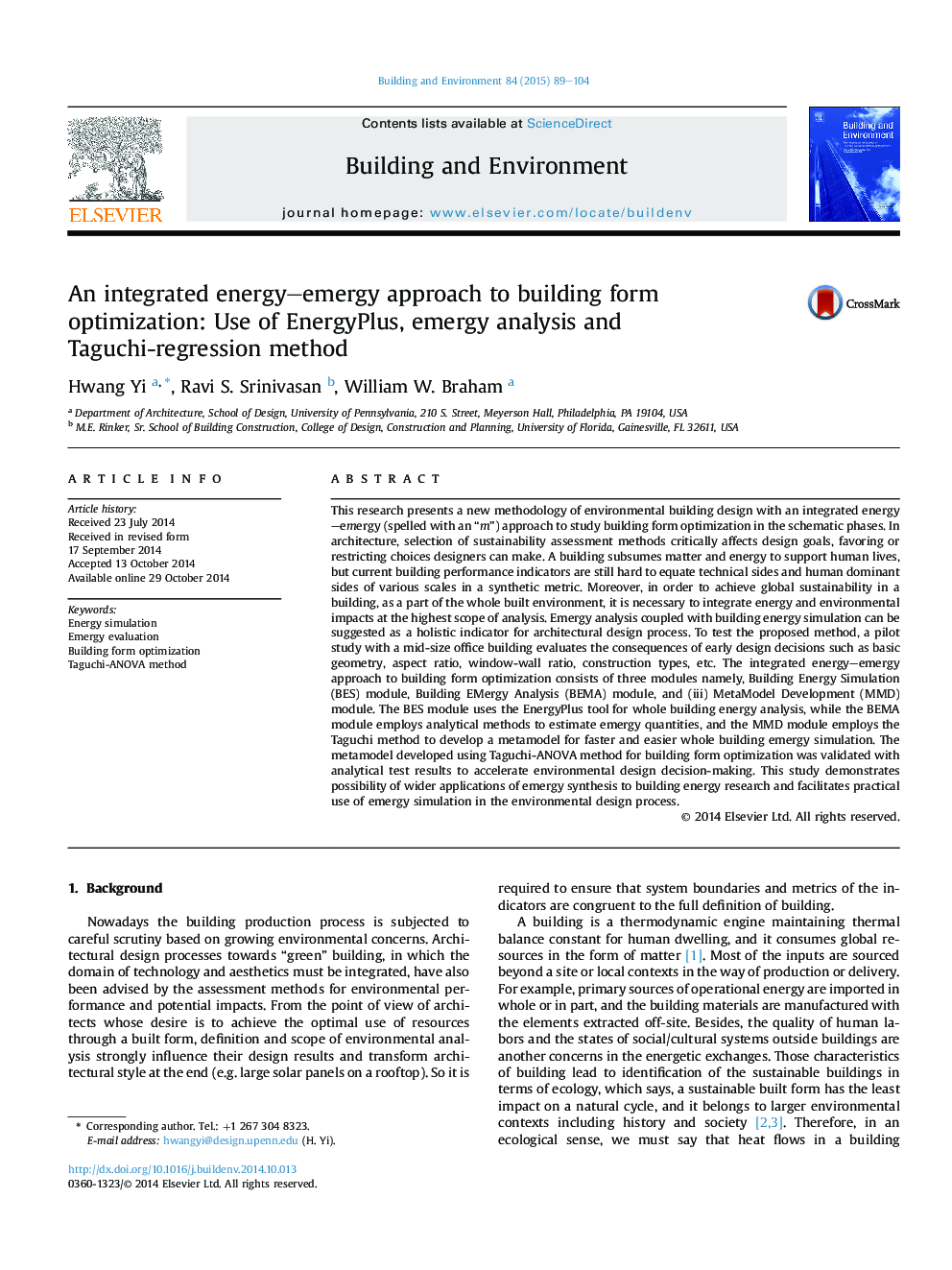| کد مقاله | کد نشریه | سال انتشار | مقاله انگلیسی | نسخه تمام متن |
|---|---|---|---|---|
| 247980 | 502538 | 2015 | 16 صفحه PDF | دانلود رایگان |
• This study establishes a whole building-emergy simulation procedure with the metamodelling techniques.
• We find the emergy-driven optimal building form is different from the energy-driven one.
• Geometry aspect ratio shows the highest responsibility to the global sustainability.
• The effectiveness of the proposed metamodel to predict building emergy use is tested with a case study.
This research presents a new methodology of environmental building design with an integrated energy–emergy (spelled with an “m”) approach to study building form optimization in the schematic phases. In architecture, selection of sustainability assessment methods critically affects design goals, favoring or restricting choices designers can make. A building subsumes matter and energy to support human lives, but current building performance indicators are still hard to equate technical sides and human dominant sides of various scales in a synthetic metric. Moreover, in order to achieve global sustainability in a building, as a part of the whole built environment, it is necessary to integrate energy and environmental impacts at the highest scope of analysis. Emergy analysis coupled with building energy simulation can be suggested as a holistic indicator for architectural design process. To test the proposed method, a pilot study with a mid-size office building evaluates the consequences of early design decisions such as basic geometry, aspect ratio, window-wall ratio, construction types, etc. The integrated energy–emergy approach to building form optimization consists of three modules namely, Building Energy Simulation (BES) module, Building EMergy Analysis (BEMA) module, and (iii) MetaModel Development (MMD) module. The BES module uses the EnergyPlus tool for whole building energy analysis, while the BEMA module employs analytical methods to estimate emergy quantities, and the MMD module employs the Taguchi method to develop a metamodel for faster and easier whole building emergy simulation. The metamodel developed using Taguchi-ANOVA method for building form optimization was validated with analytical test results to accelerate environmental design decision-making. This study demonstrates possibility of wider applications of emergy synthesis to building energy research and facilitates practical use of emergy simulation in the environmental design process.
Journal: Building and Environment - Volume 84, January 2015, Pages 89–104
